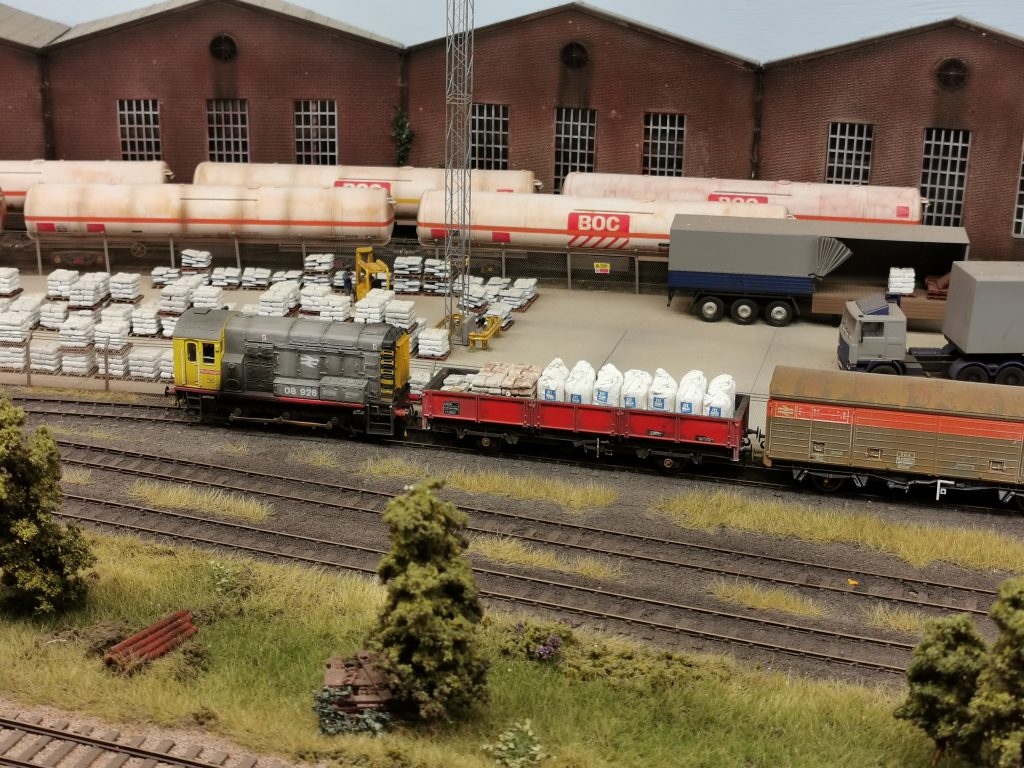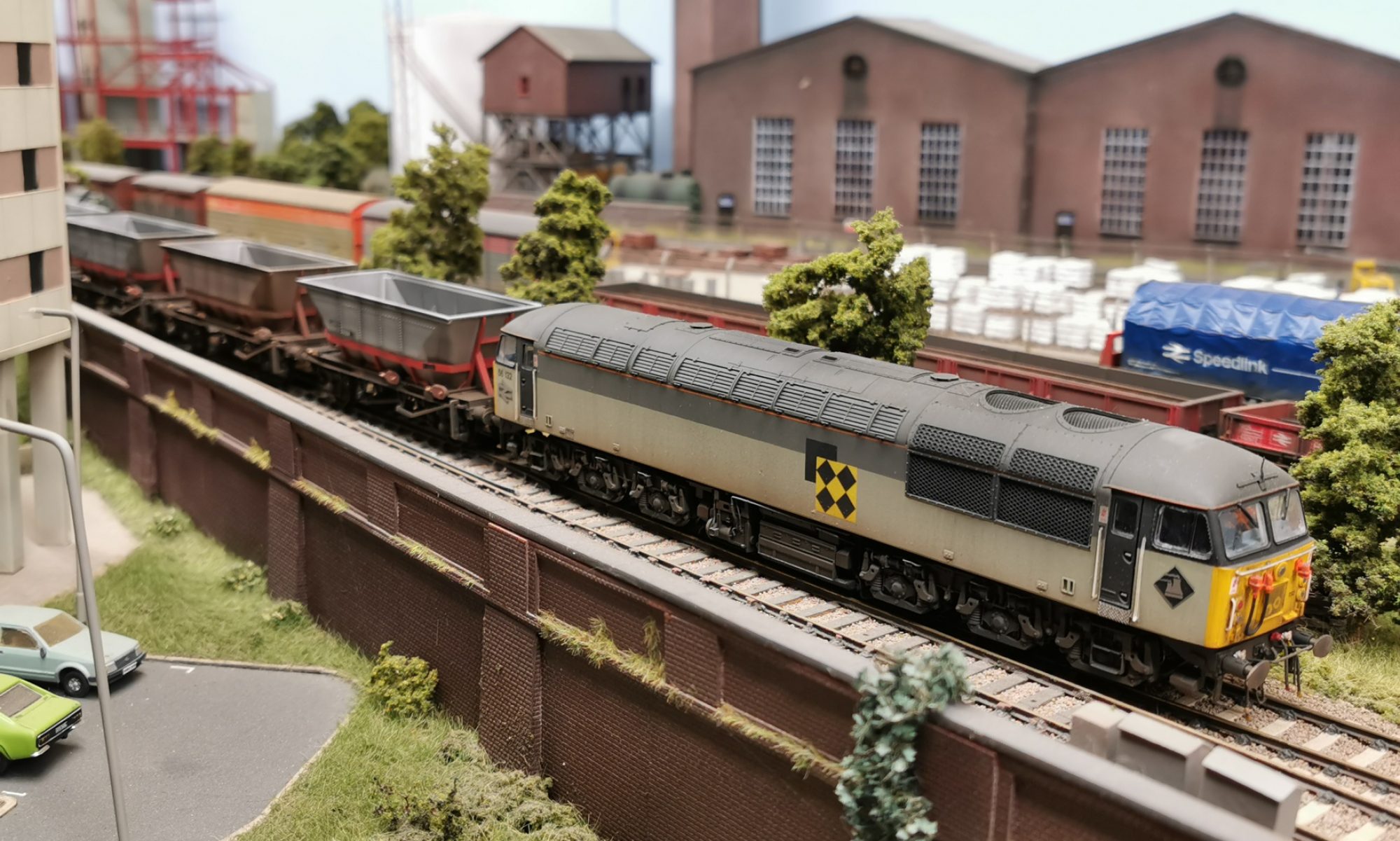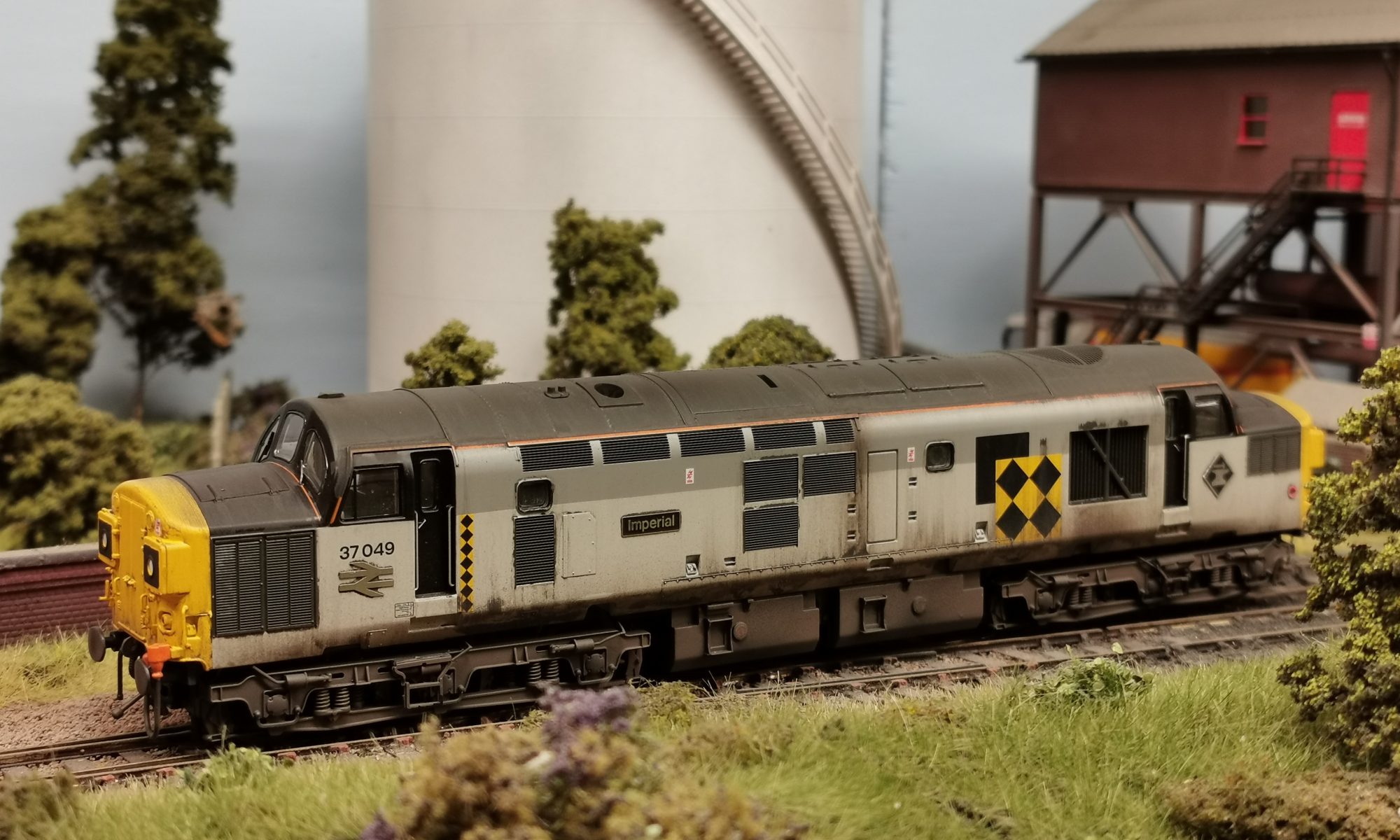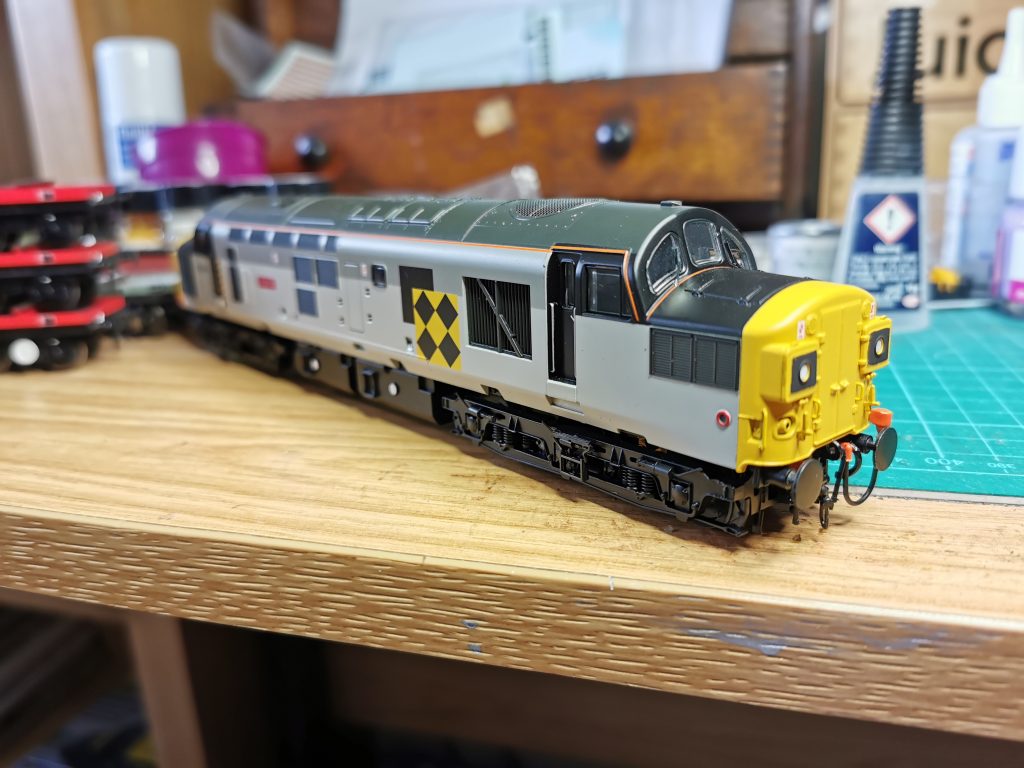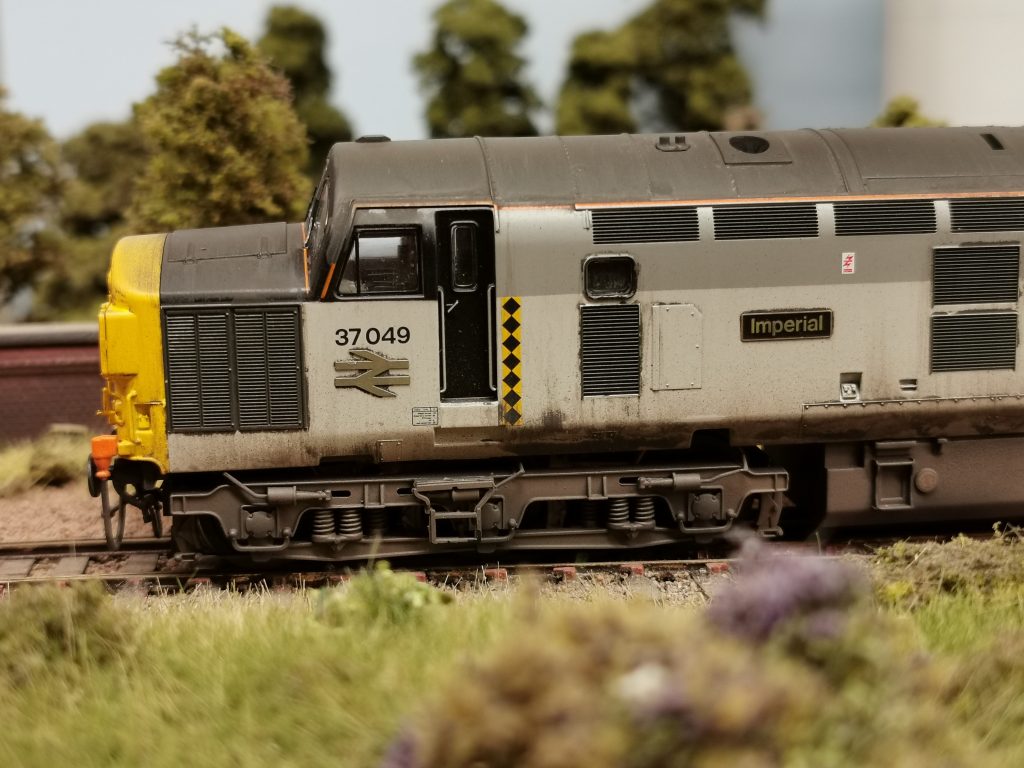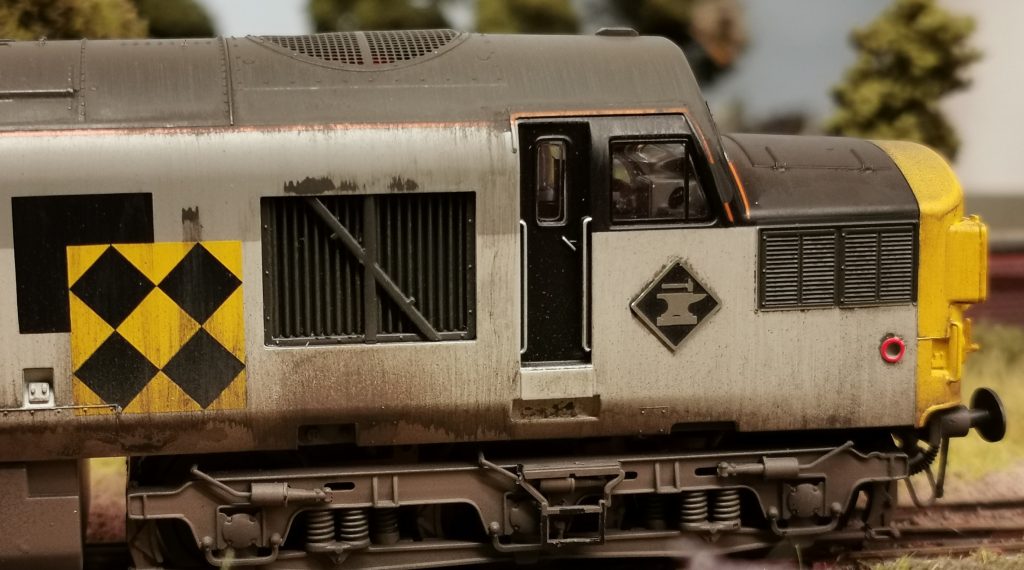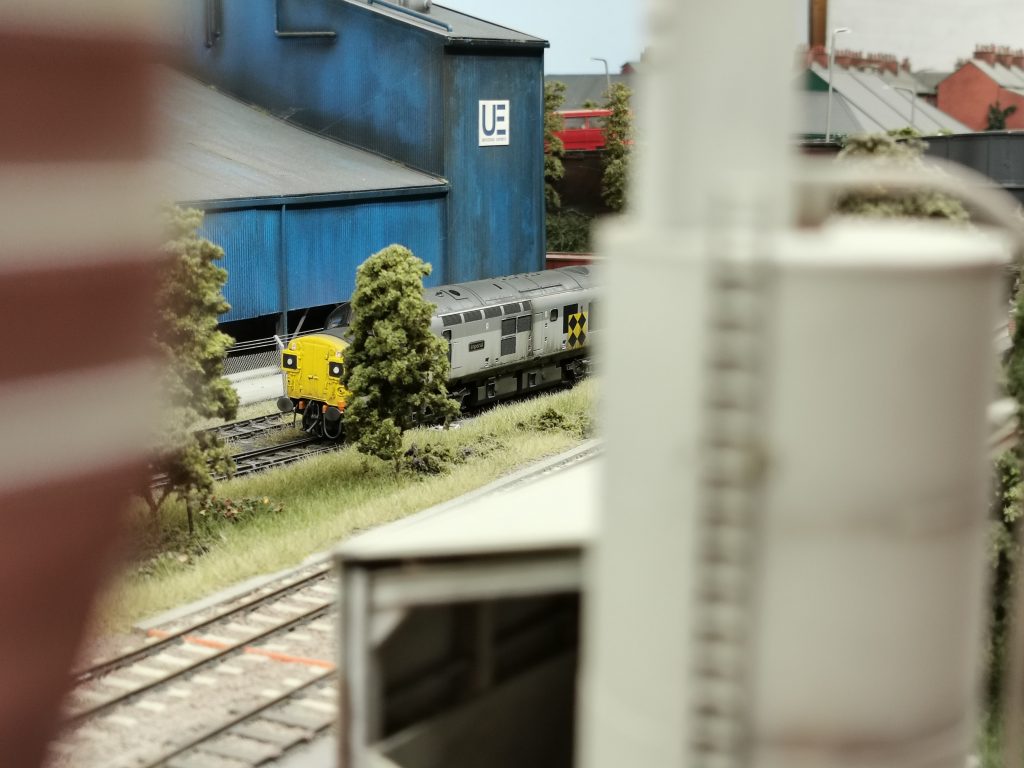In November 1988, during a regional re-organisation, Birmingham area shunt locos and their duties were re-alloacted to Bescot. One of 10 shunters transfered from Tyseley was 08928.
For this project, I’ve started with a Hornby class 09. Removing the unwanted pipework from the front and rear of the loco, I then filled the holes with Deluxe Materials filler before brush painting over it. I then seperated the cab from the main body and removed the windows. Next, I carefully masked up the cab front and the radiator end which will save me painting the wasp stripes later. The body was primed with Railmatch acrylic primer thinned with acrylic thinners and while this was drying I brush painted primer onto the bufferbeams, buffer shanks and along the chassis side.
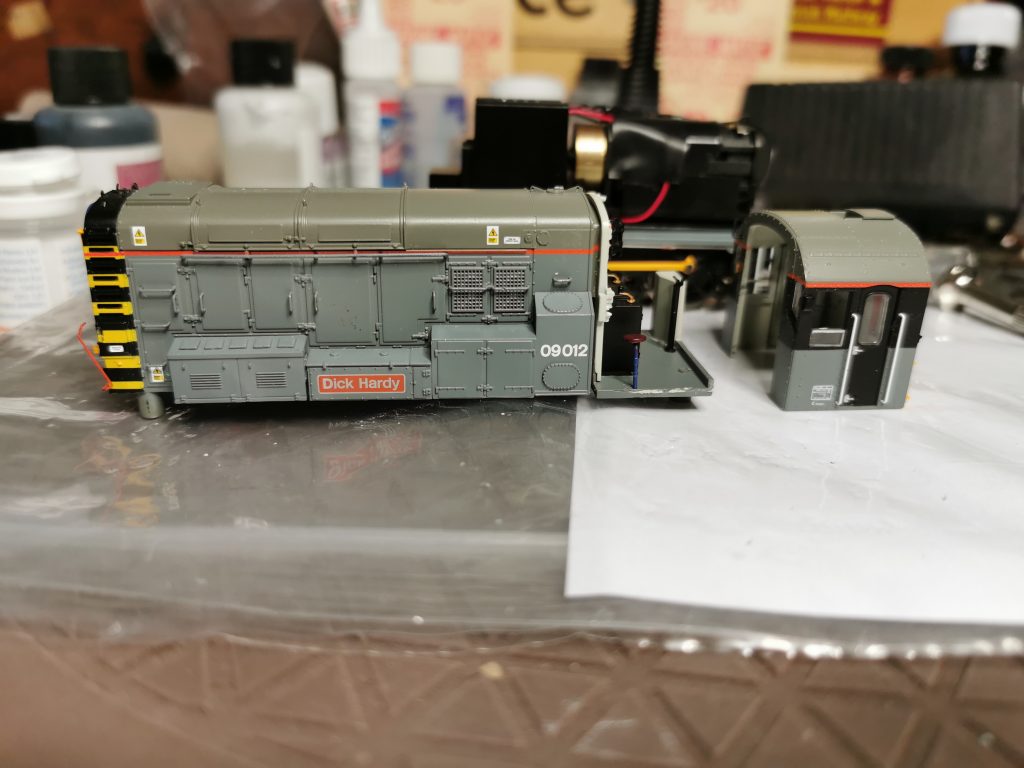
My attention now turned the the loco livery, and the cab was painted Railmatch Warning Panel Yellow, while the main body and roof was painted Games Workshop Dawnstone Grey. Once dried, a coat of Railmatch acrylic gloss varnish was sprayed ready for transfer application.
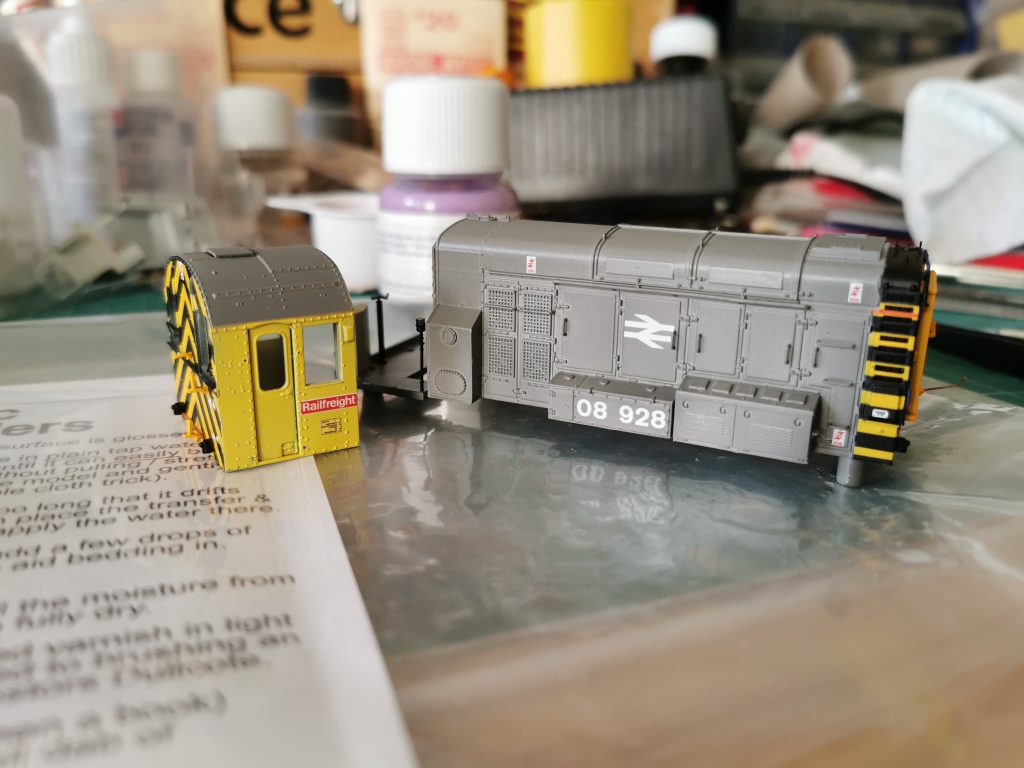
Transfers come from my prefered supplier Railtec, and they do a sheet for this particular loco with everything you need. The transfers were applied and a coat of acrylic matt varnish was sprayed to secure them to the model. The bufferbeams and chassis sides were then brush painted red. After looking at photos of the prototype, I decided on Royal Mail Red because the red is much more vibrant than standard Rail Red. Once dry, the glasing was refitted and secured using Humbrol Clearfix, the cab and main body were reunited, and the body located back on the chassis.
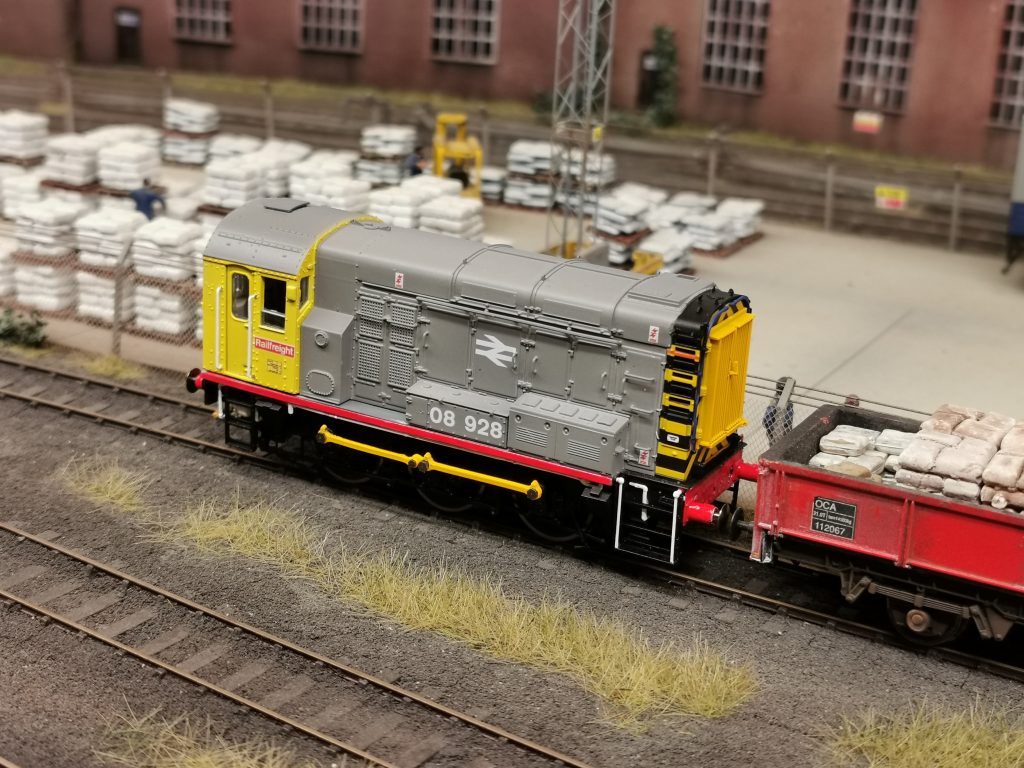
Fitting screw link couplings to the Hornby Class 08 isn’t straight forward with its solid metal chassis, so I opted to fit the ones supplied in the detail bag. These are only really meant for decorative use, but I figured that if I used the links from the wagons to couple onto the hook on the shunter, this should be ok. A good strong super glue was used to secure the screw links in place, and bufferbeam pipework was then added at both ends.
My attention then turned to the weathering, and a suitable prototype photograph from 1990 was sourced online. For copyright reasons I can’t share the photo here, but the loco has a fair amount of oily residue to both sides and on the underframe and connecting rods. I started with a mix of White and Dawnstone Grey and applied the wash all over the grey sides and roof to add to the already faded paintwork. Once dry, I used the Dawnstone Grey without adding the white, as a wash into all the panel lines. I then used the airbrush with Railmatch Frame Dirt for the underframe area and radiator grille, Roof Dirt along the roof panel lines and Soot Black for the exhaust port and filter panels.
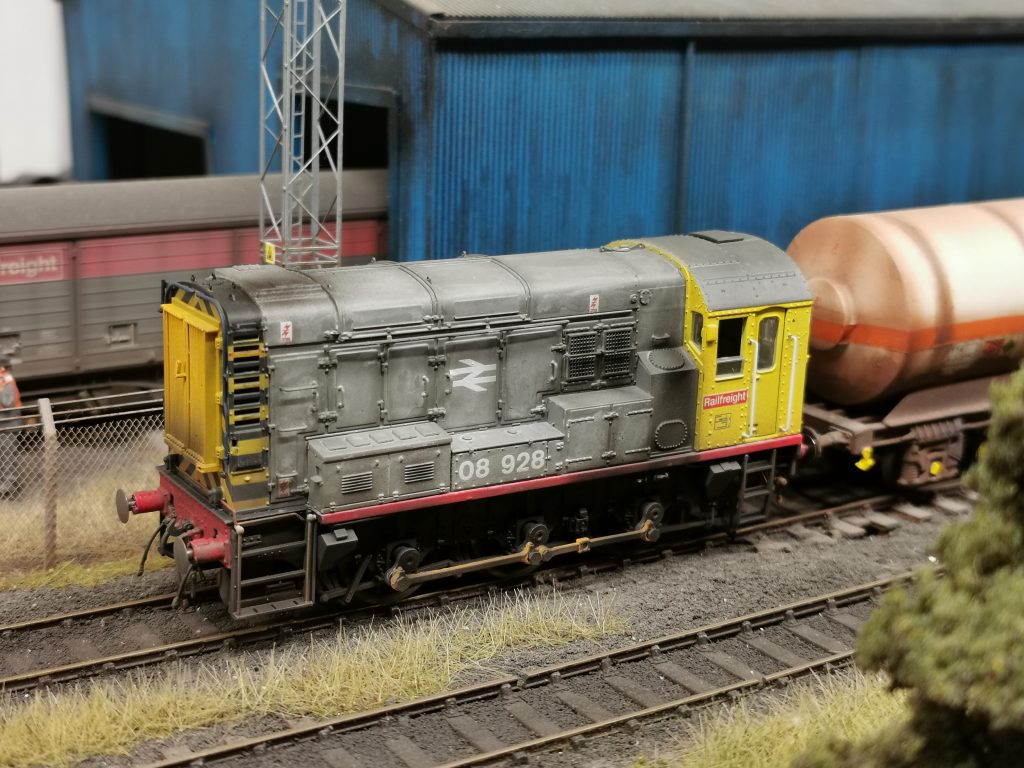
I will add some oily streaks to the filter panel etc, at a later date when my local model shop can reopen. For this I’ll try AK Interactive Grease, as recommended by a friend.
